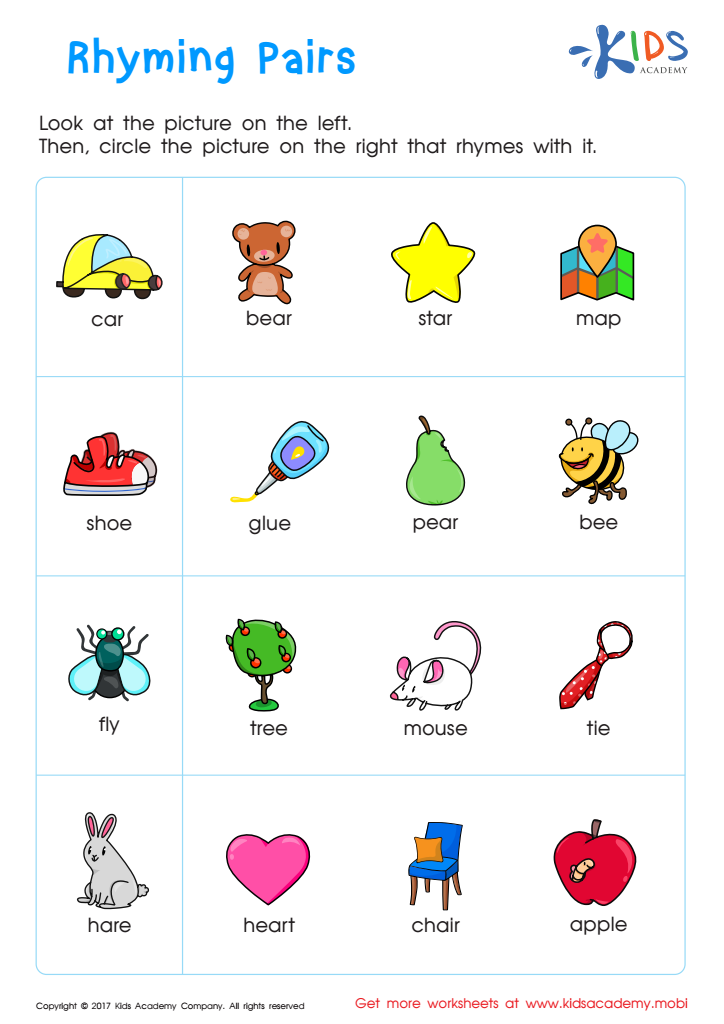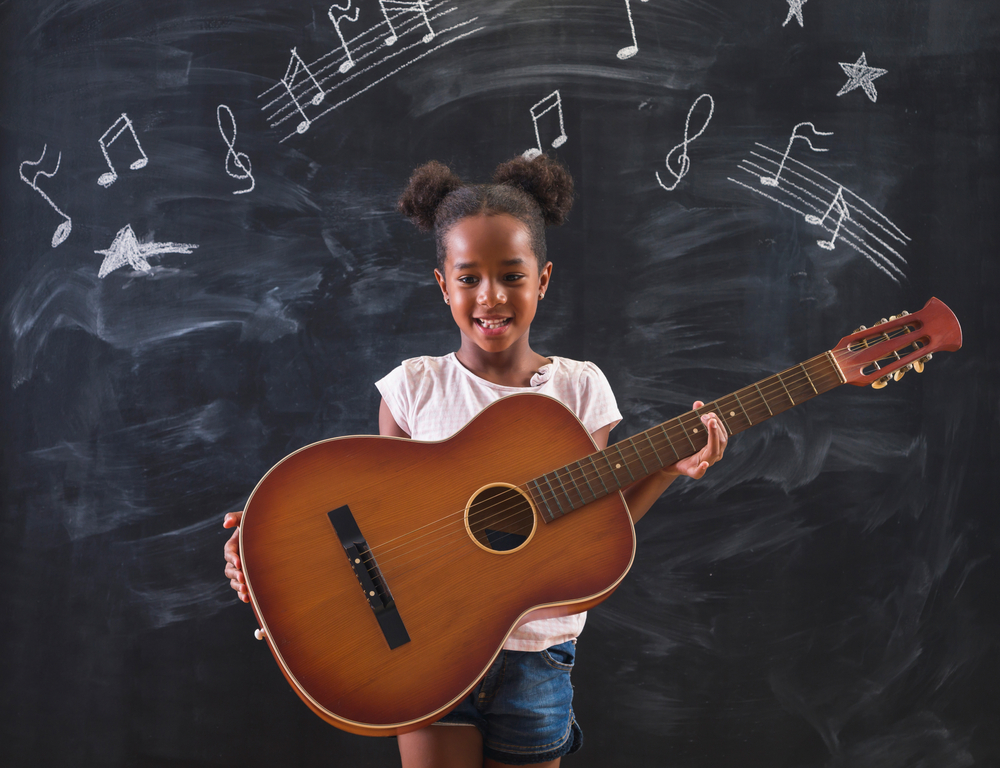Normal Rhyming Worksheets for Ages 6-8
13 filtered results
-
From - To
Discover our fun and educational Rhyming Worksheets for ages 6-8, designed to enhance phonemic awareness and early reading skills. These engaging, printable activities feature familiar words and charming illustrations to captivate your child's interest. The worksheets focus on identifying rhyme pairs, creating rhyming words, and boosting vocabulary through playful exercises. Ideal for both classroom and at-home learning, our rhyming worksheets help young learners develop a strong foundation in reading while sparking creativity and enjoyment. Equip your child with essential literacy skills. Visit us today to explore our wide range of expertly curated educational resources!
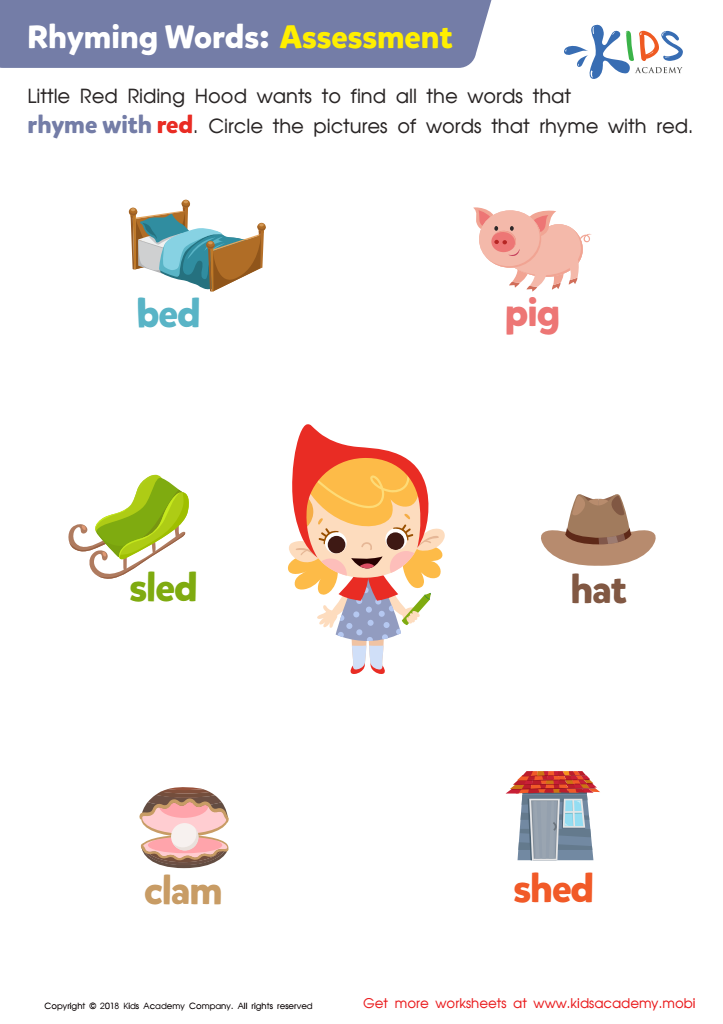

Rhyming Words: Assessment Worksheet
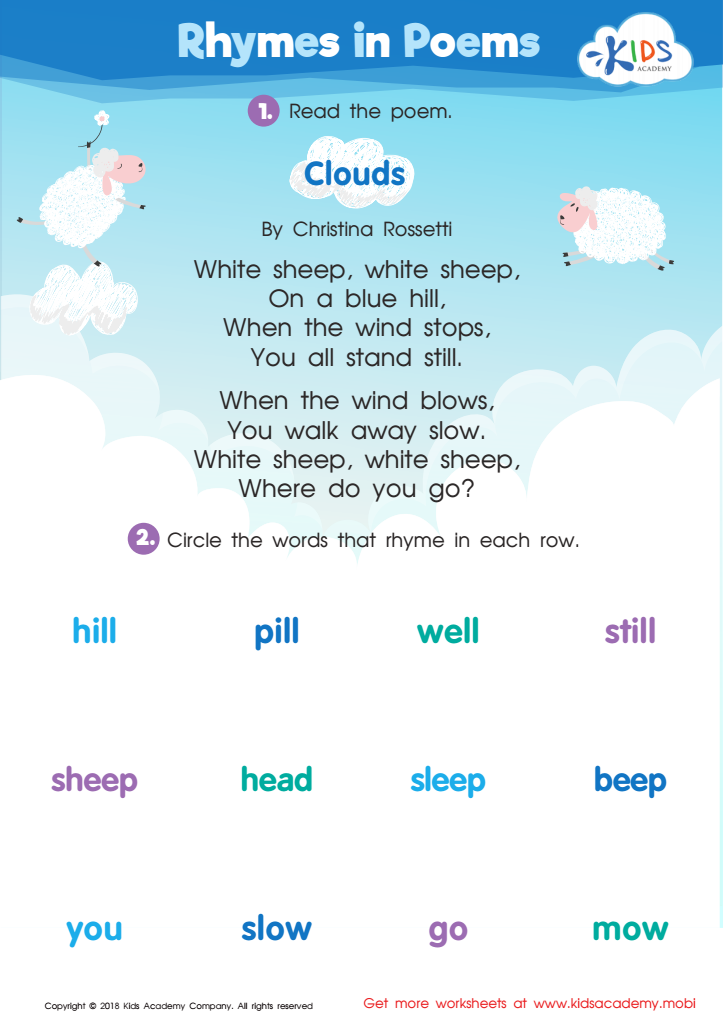

Rhymes in Poems Worksheet
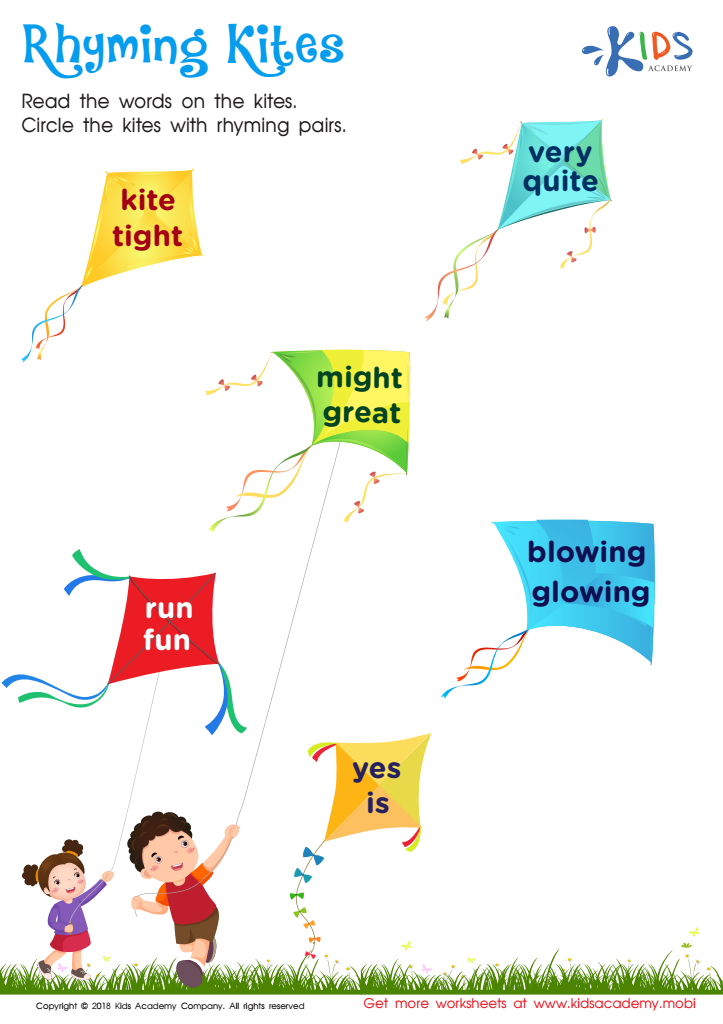

Rhyming Kites Worksheet
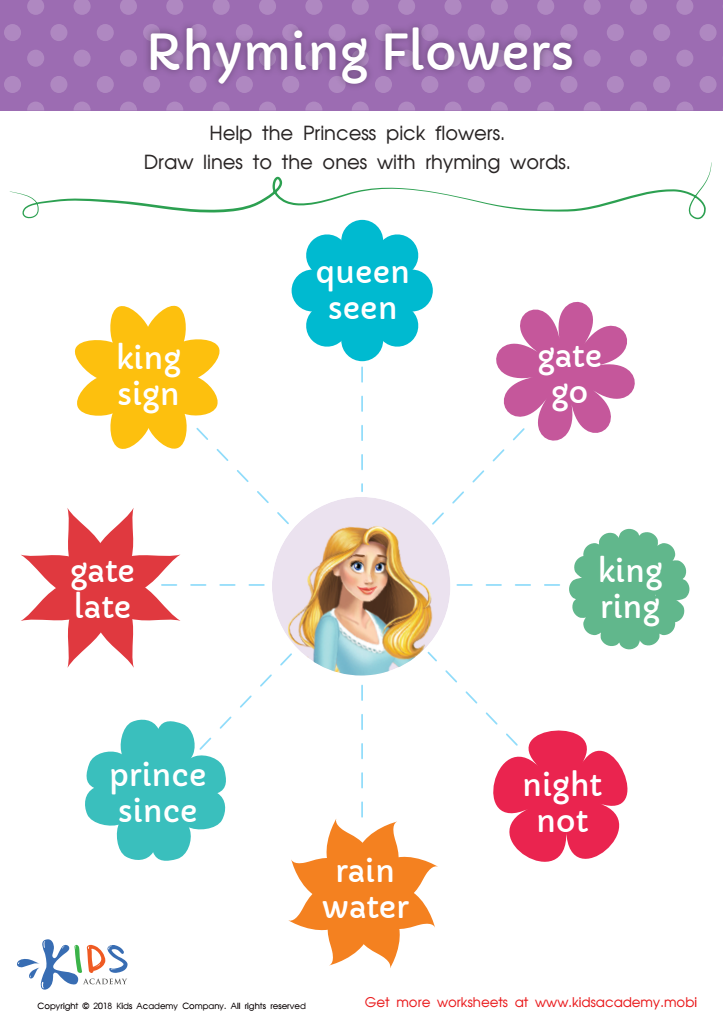

Rhyming Flowers Worksheet


Rhyming Words Rhyming Worksheet


Rhyming Words Worksheet
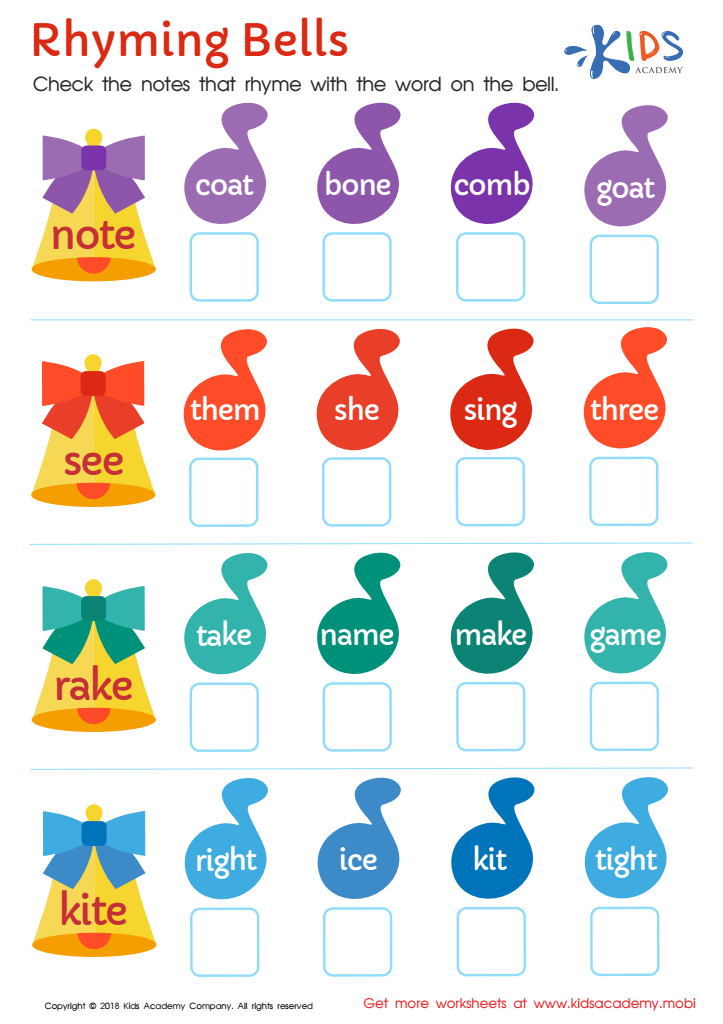

Rhyming Bells Worksheet
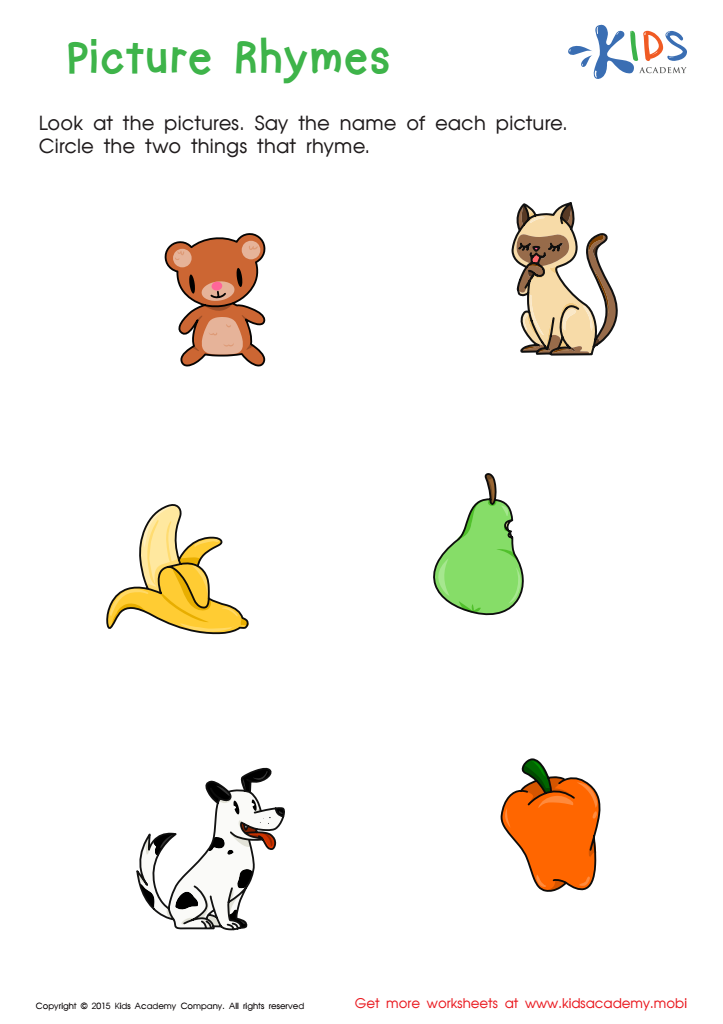

First Words: Picture Rhymes Worksheet
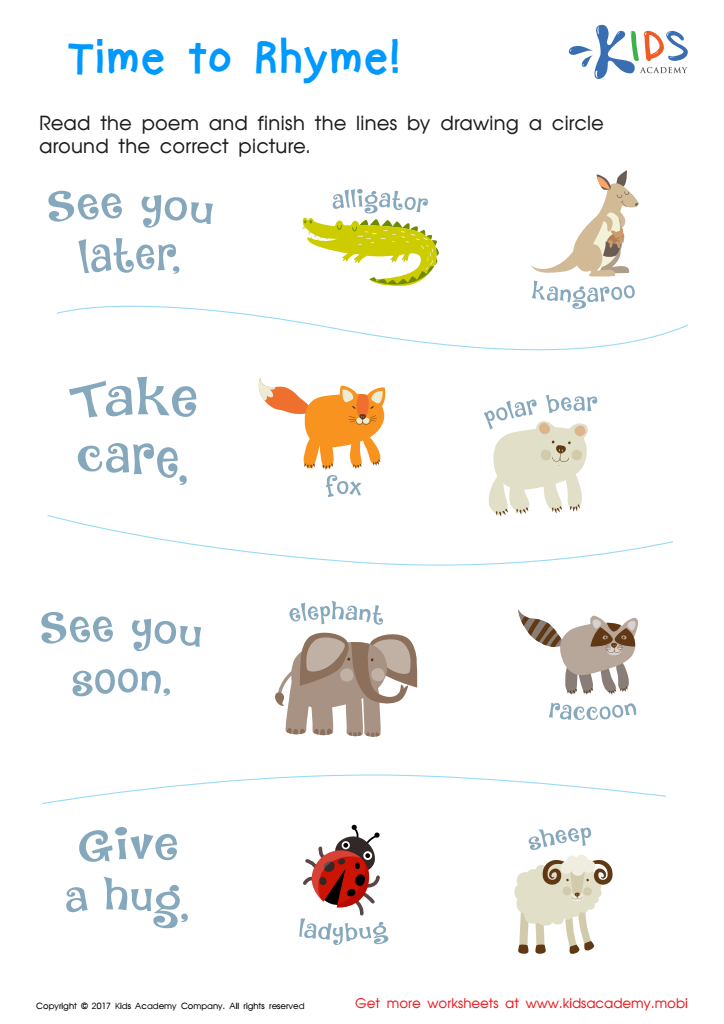

Time to Rhyme Rhyming Worksheet
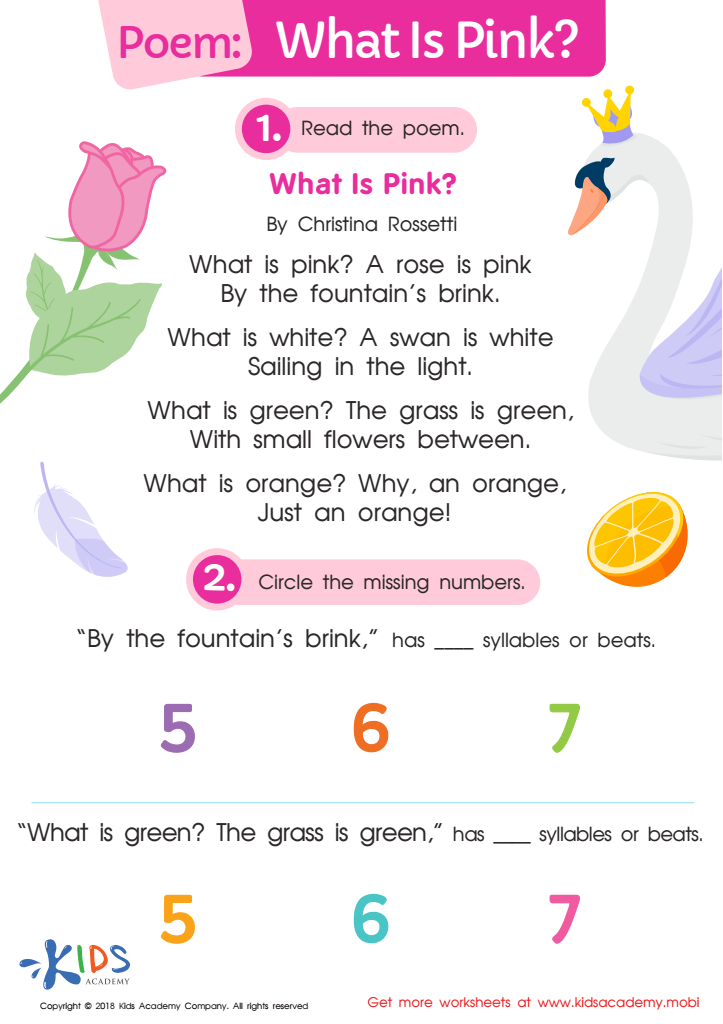

Poem: What Is Pink? Worksheet
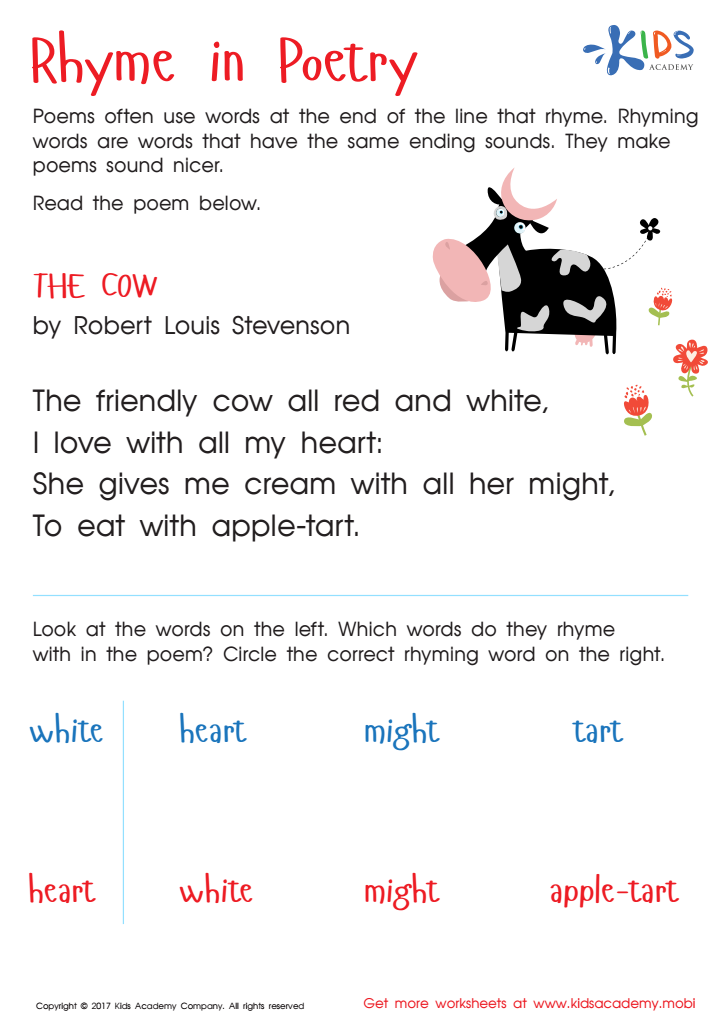

Rhyme In Poetry Worksheet
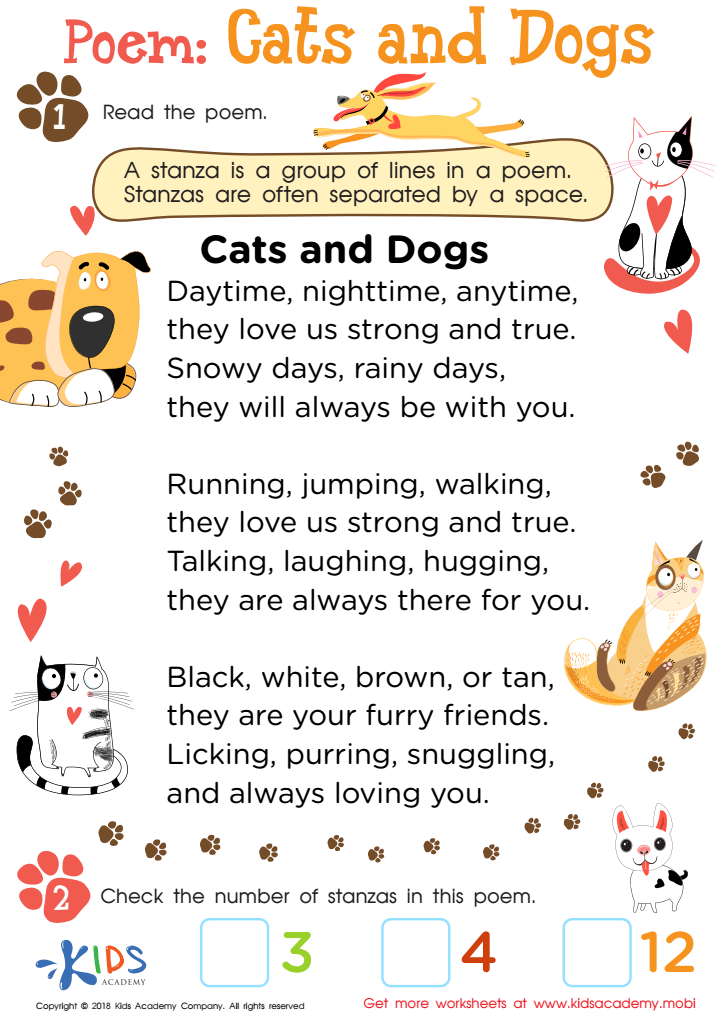

Poem: Cats and Dogs Worksheet
Parents and teachers should care about normal rhyming for children ages 6-8 because it plays a crucial role in language development and early literacy skills. During these formative years, rhyming helps children recognize and predict patterns in sounds, which is fundamental for phonemic awareness—the ability to hear, identify, and manipulate individual sounds in words. This skill is a building block for reading and spelling.
Rhyming activities, such as reading rhyming books, singing rhyming songs, and playing rhyming games, make the learning process engaging and enjoyable, boosting a child's motivation and confidence in using language. Not only does this foster a love for reading, but it also enhances a child's vocabulary, pronunciation, and understanding of how language works.
Additionally, rhyming can improve memory and cognitive development by helping children to recall words and sequences. This mnemonic benefit extends to their academic performance across subjects. In a classroom or home setting, focusing on rhyming can also support social-emotional development, encouraging children to interact and collaborate with peers during rhyming games and activities.
Overall, investing time in rhyming activities helps lay a strong foundation for literacy skills that are essential for academic success. It creates a dynamic and supportive learning environment where children can thrive both linguistically and socially.

 Assign to My Students
Assign to My Students


